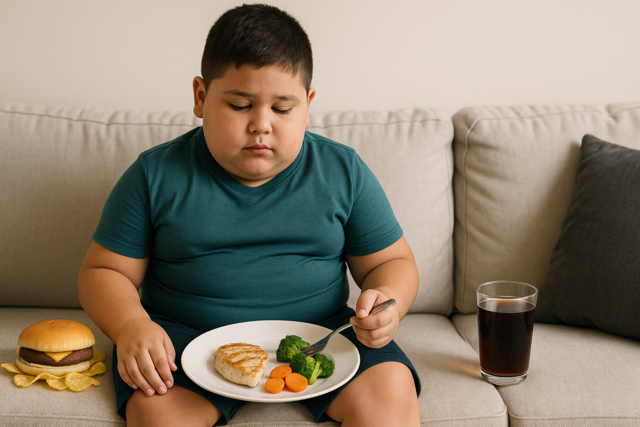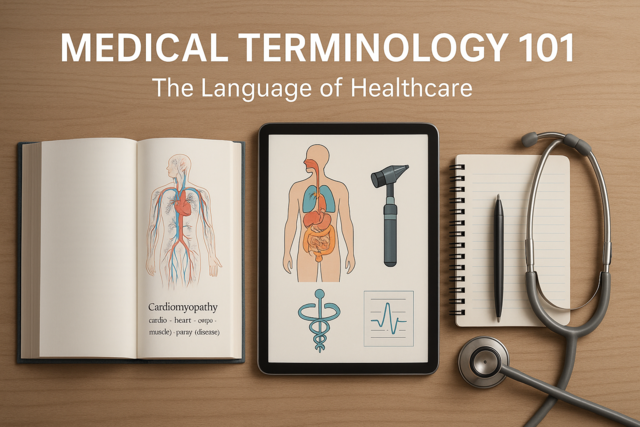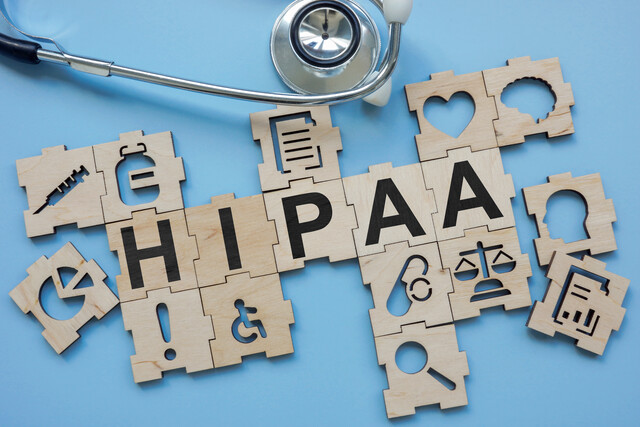In this article, we will jump from learning about your personal health to understanding health and wellness on a community level. You will learn about the state of health in America and public health initiatives to combat communicable illnesses, such as waste removal, sewer systems, and vaccinations.
Section 1. The Importance of Community
We are all a part of a community and we usually belong to multiple communities at once. In addition to your city, state, and country, there is your school community, your neighborhood, your religious community, sports teams, your group of close friends, and so forth. Each of these groups serves as a community to which you belong and together, they help to shape you into the person you are. In addition to these communities nurturing you as you grow and develop, it is important to also realize that you can contribute to the success and longevity of the community as well.
One way to help enrich your communities is not only to maintain your personal health, but also to promote health and wellness within your community. By doing so, you aid others in improving their health and overall outlook on life. When this happens, individuals are more eager to achieve and work harder towards their goals. This all has a positive impact on the community, because dedicated and generous people will work to ensure that the community thrives.
~ Check In Section 1.
How many different types of communities do you belong to?
What do you see as your role in maintaining community health?
Section 2. The State of Public Health in the America
Compared to other countries, Americans have lower rates of bacterial and viral infections, but have a higher rate of obesity, diabetes, heart disease, and other chronic diseases. For example, the United States has more deaths from heart disease than many other developed nations, including Canada, Italy, Germany, and Japan. Many of these illnesses are the result of poor diet and lifestyle choices.
The lower rates of bacterial and communicable diseases that Americans have can be attributed to increased resources available to developed nations to cleanse and purify water, install central plumbing and sewer systems, as well as the increased presence of preventative health and disease awareness campaigns. However, although there are no longer epidemics of diseases such as smallpox and rubella in the U.S., there are continuously new strains of bacteria and viruses that are breeding which can cause illness.
In the rest of this section, we will examine the various elements of public health and how they work together to minimize and treat illness and improve the health of citizens in the United States.
~ Check In Section 2.
Before reading this section, how did you think Americans fared health wise compared to the rest of the world?
Have you heard any accounts from elders in your communities describing past disease epidemics?
One of the initiatives most responsible for the reduction of illness and the decrease in the spread of disease is the effort to improve community sanitation systems. Before there was such a thing as organized trash removal, people would either discard waste in certain areas of their property, or haul it to a communal dumping ground where it could be burned, but often was not. Standards of cleanliness were much lower and it was common to find garbage rotting alongside the road. The trash and garbage lying about attracted rats and other pests which carried diseases that could be contracted by humans.
One of the biggest examples of how not having a waste removal system and standards of hygiene in place can cause illness was the infamous "Black Plague." Also known as the "Black Death," this epidemic hit Europe in the 14th century and wiped out approximately 75 million people across the European continent, 30% of the population!
The plague is said to have originated in China where it killed an estimated 25 million people. The plague was carried into Europe by black rats which stowed aboard ships to eat the garbage and other food stuffs that were largely unsecured. When the ships docked, the rats moved ashore and spread throughout the countryside consuming the waste that was readily available or tunneling into grain storage containers. The rats were infested with fleas, and when the fleas spread to humans, they carried with them the disease from the rats which the fleas had previously feasted upon. During this period in history, people did not wash as frequently as they do today. There was the prevailing thought that if one bathed too much, they would catch an illness and die. Unfortunately, the very thing they feared, instead of protecting them, contributed to many deaths.
Brush your teeth at least twice a day and replace your toothbrush every three months.
Never pick up discarded needles, condoms or other medical or personal products.
Refrain from visiting friends who have a contagious disease until they have healed.
Use caution when using public bathrooms and line the seat with toilet paper if you are going to sit.
Never eat food that you think has gone bad or cook meat that has a pungent or rotten smell.
For females, always wrap sanitary napkins and discard them in a sealed trash can.
Can you imagine living without indoor plumbing?
How would you rate your personal hygiene? How can it be improved?
Section 4. Vaccinations and Public Health
Another major event that contributed to widespread disease prevention is the advent of mass immunizations. In your community you interact with a variety of people on a daily and even an hourly basis. The people you come into contact with come from various walks of life, have exposure to different bacteria and viruses, and have adopted various standards of personal hygiene. As a result, it is possible to come into contact with a number of viruses or other illnesses at any given time.
There is no need to panic however, because your immune system (a complex internal disease fighting system) handles most of these threats without you even being aware that they exist. For some of the more simple illnesses, you often develop a natural immunity because of routine exposure to germs and bacteria that can't be avoided. However, for more serious diseases additional precautions may be necessary.
The theory behind vaccines is that by exposing the body to a weakened strain of a certain disease, the immune system will create antibodies (defensive cells) against that specific disease. The theory holds that if a person is exposed to the disease after being vaccinated, the antibodies present in their system can easily defeat the virus before it is able to take hold and spread throughout the body.
Vaccine History
The formal use of immunizations can be traced back to the 17th century; however, there are accounts of ancient civilizations cutting themselves and rubbing the scabs or clothing of an infected person on the open wound to initiate what we know as the development of antibodies. And although immunizations were experimented with during the 19th and early 20th centuries, widespread immunization was not instituted until the 1940s. Many scientists credit immunizations for changing the face of health in America, while others point to the increased focus on sanitation as the reason for a reduction in disease.
Conclusion
Preventative health has come a long way since the 17th century. It is amazing how implementing fundamental changes in sanitation and hygiene, which today we take for granted, have done so much to decease serious illness and death. Additional scientific breakthroughs such as vaccinations further helped to reduce disease and death.
Recycling and Water Treatment
Section 1. Recycling
Recycling is one of the most visible community environmental initiatives and officially began in 1972. Recycling is the act of taking used materials (plastic, steel, newspaper, and others) and reprocessing them for future use instead of extracting more raw materials from the environment. This creates less of a burden on the Earth's natural resources, of which there is only so much. In addition, by recycling things like plastics, which are not biodegradable, we stop them from being tossed into our rivers, streams, and parks, which causes problems for both the wildlife and humans as well.
Based on the amount of natural and synthetic (manmade) resources we use each year, without recycling efforts our environmental resources would be in danger of being depleted and polluted with toxic chemicals.Take a look at the following statistics to see just how much recyclable material we use each year.
- To produce each week's Sunday newspapers, 500,000 trees (a half million) must be cut down.
- The average American office worker uses about 500 disposable cups every year.
- Every year, Americans throw away enough paper and plastic cups, forks, and spoons to circle the equator 300 times.
- Americans use 2,500,000 plastic bottles every hour! Most of them are thrown away and taken to landfills. (Two and a half million per hour!)
- Every year, Americans use approximately 1 billion shopping bags, creating 300,000 tons of landfill waste
- The average office worker in the U.S. uses 10,000 sheets of copy paper each year. That's four million tons of copy paper used annually.
- Plastic bags and other plastic garbage thrown into the ocean kill as many as 1,000,000 sea creatures every year.
Astonishing isn't it? Well, by participating in community recycling efforts, you can help to reduce the load on the environment. Each person, household, and each community can make a difference in taking care of our planet. Take a look at the ways old material can be reused and how that affects our community.
- If all our newspapers were recycled, we could save about 250,000,000 trees each year.
- The amount of wood and paper we throw away each year is enough to heat 50,000,000 homes for 20 years.
- Recycling one aluminum can saves enough energy to run a TV for three hours, or the equivalent of a half a gallon of gasoline.
- It has been estimated that recycling, re-use, and composting create six to ten times as many jobs as waste incineration and landfills
- Recycling decreases the need for trash incinerators and landfills, which produce emissions of greenhouse gases that contribute to respiratory problems and to global warming.
There are so many items that can be recycled, including glass, paper, aluminum cans, milk cartons, newspapers, old tires, and more, join the recycle movement. Encourage your family to do their part to improve the health of the community by recycling. If your neighborhood does not have a recycling program, contact the city's municipal services department. They can provide recycling bins and set up a time to pick up old materials.
~ Check In: Section 1.
Were you aware of how many trees we cut down for paper?
Does your family currently recycle? Why or why not?
Have you seen any commercials, flyers, or posters in your community which encourage recycling? Are you interested in starting things off?
Water is critical to life on Earth. Every living thing, humans, animals, and plants, need water to survive and grow. In times past families usually got their water supply from a well on their property, or a fresh spring, or creek in the neighborhood. However, with the proliferation of cities, which brought congestion, factories, and more human and animal waste, the cleanliness of the water supply was again in question. In fact, in many parts of the world, there is still a dangerous shortage of clean water due to the lack of treatment facilities to cleanse water of human and animal fecal matter which contains a host of illness-causing bacteria. We will discuss this further in a future lesson on global health.
Although indoor plumbing and sewage treatment plants helped to reduce water borne illnesses in America, as we progressed scientifically and industrially, a new threat to our water supply emerged. New methods of agriculture introduced chemicals such as pesticides and herbicides into the soil, which eventually made their way into the creeks and rivers. These chemicals were manufactured to kill insects and weeds on farmland and not to be consumed by humans, of course. Also, chemicals from plastics and other synthetic materials that were dumped in rivers and landfills eventually make their way into the water supply. This, along with things like bacteria and other harmful organisms is the reason why water treatment is so important to our health.
~ Check In: Section 2.
Were you aware of all of the things that are in our water supply?
Have you heard of the impact of modern agriculture and science on the water supply?
How is Water Treated?
In addition to purifying the water supply, some local community treatment plants add fluoride to the water in an effort to decrease tooth decay. If you receive regular dental checkups, you likely remember the dentist placing fluoride paste on your teeth to treat them and help prevent the formation of cavities. This is the same premise behind adding fluoride to the water that you drink.
While there are some proponents of water fluoridation and it may have dental health benefits, there is also possible harm in the practice. As noted by the EPA, there is the possibility of tooth pitting (craters forming in the tooth enamel) for children under eight years of age who regularly drink fluoridated water.
In addition, the EPA has stated that excessive fluoride exposure can lead to serious bone health issues in older adults. There is an increased risk of bone fractures, something the elderly are already concerned about due to the prevalence of osteoporosis (brittle bones). Continued fluoride exposure can lead to chronic tenderness and pain in the bones as well.
Because of the potential risks of excessive fluoride consumption, the EPA has listed maximum concentration levels that can safely be tolerated in drinking water and is defined as 4 milligrams per liter or 4 parts per million. This is the highest threshold that can legally be added to water, but local and state governments have the ability to enforce lower amounts as they see fit.
~ Check In: this Section.
Do you think the water sanitation process is able to effectively purify our drinking water?
How do you feel about fluoride being added to your drinking water?
To avoid the confusion and potential dangers of plant treated water, some people opt to drink bottled water. However, it is important when choosing a bottled water, to read the label carefully. Consumers automatically identify bottled water as being more pure and healthy, but that is not always the case. Some bottled water is not, in fact, spring water (highly desirable), but purified tap water. One company that recently made headlines for selling tap water as spring water is Aquafina, owned by PepsiCo. After pressure from a consumer watchdog group, the company added the disclosure "Public Water Source" to its bottles.
Water Filters
~ Check In:
Do you drink tap water or bottled water?































